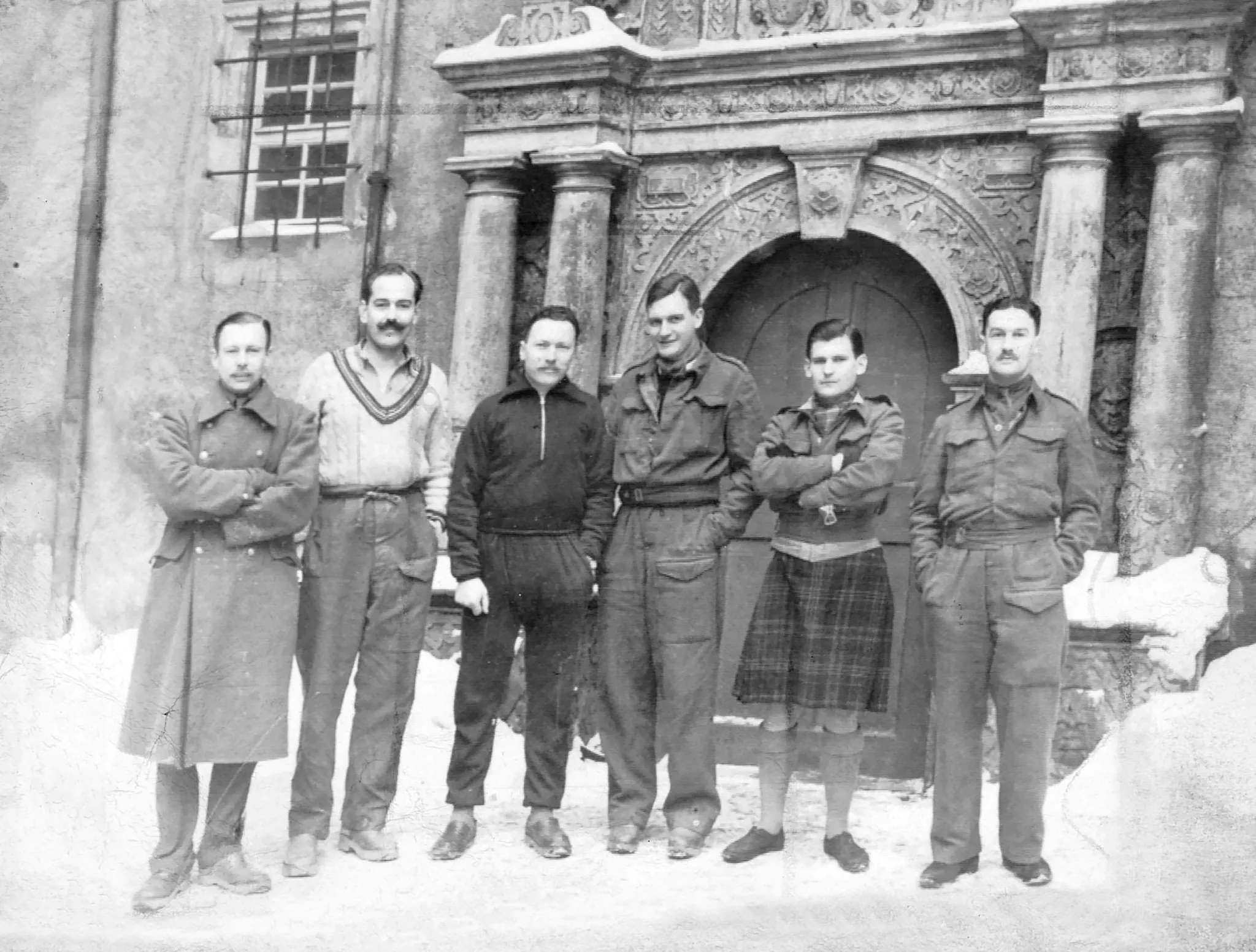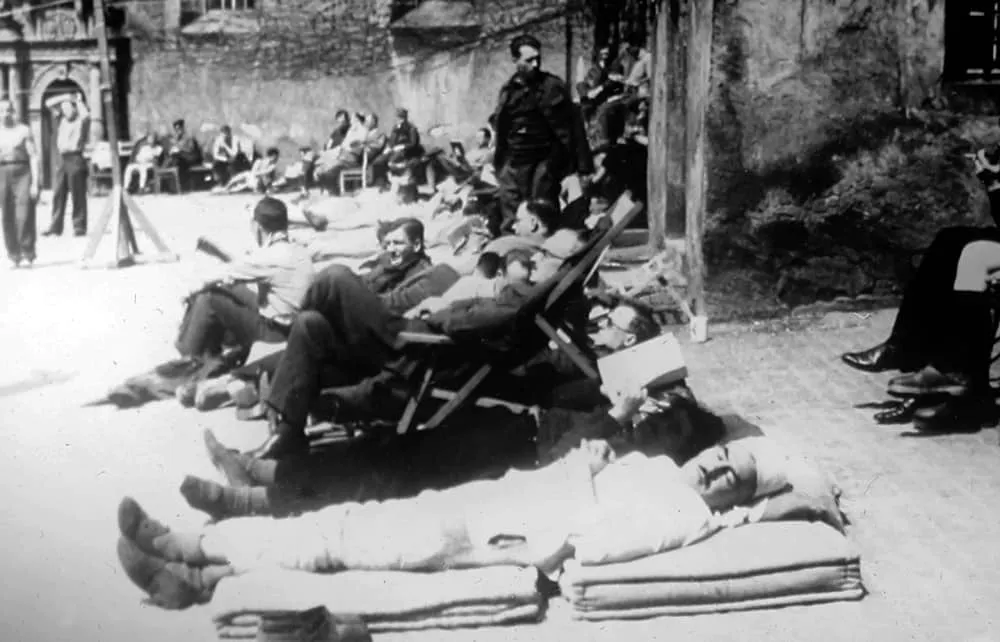They say each generation needs its own biographies of Cleopatra, Joan of Arc and Napoleon, not just when more evidence is unearthed but because the lens through which we view character and motive changes. The same is true for the great set pieces of history.
According to Ben Macintyre, the story of Colditz and its World War Two POWs with their “mustaches firmly set on stiff upper lips, defying the Nazis by tunneling out of a grim Gothic castle on a German hilltop” has been unchanged and unchallenged for more than seventy years. In his latest page-turner, Macintyre includes the stories of those heroes who were not straight, white, mustachioed or even male, and others who were at once courageous, arrogant and bigoted. Colditz held both toffs and tommies, and class and connections could be as perilous as they were propitious. At least one story of treachery is also brought to light. The result is like watching a black-and-white photograph being colorized. Even the German guards, previously “painted in one, uniform color” emerge in diverse tones from behind their field gray.
Colditz was designated for those prisoners of the Third Reich who had a demonstrated history of escaping, so it is perhaps unsurprising that there were more attempted breakouts from this legendary leaky castle than from any other Nazi German POW camp. After a cliffhanger prologue, Macintyre opens with the arrival of the first six British officers. Once locked in, the men were welcomed by a group of Polish prisoners carrying several large bottles of beer. It had taken the Poles less than a week to learn how to pick the castle’s ancient internal locks, setting the scene for a series of remarkable escape attempts on the external walls.
Soon several tunnels were being dug by different national teams, while more independent minded escapers tried to make their exits stuffed into mattresses or Red Cross tea chests labeled “surplus items”; jumping from windows on ropes of knotted sheets; or disguised variously as boiler engineers, gardeners, female visitors and members of the Hitler Youth.
Identity cards and passes were forged using a homemade wood-and-wire typewriter and photographs taken with a camera made from a cigar box and spectacles. The future Conservative MP Airey Neave was humiliated at being caught in his cardboard-and-tin embellished approximation of a German uniform, but later became the first British POW to make a successful “home run,” chalking up a cheering mark for the Brits on the POWs’ escapee league tables. Both the prisoners and their warders learnt from these early attempts, and the castle grounds were soon full of tripwires, machine-gun emplacements and patrols.
It would be wrong to say that this history is pure escapism, however. In Macintyre’s hands the Colditz story is “a tale of inactivity” punctuated by frequent moments of high drama. For many prisoners, captivity was to be creatively endured. Violent sports, music practice and theater productions (Denholm Elliott and Donald Pleasence both among the cast) all helped divert German attention away from secret radio construction and escape preparations. When nothing else was happening, the men dreamt of food, taunted their jailers, trapped wasps to release en masse bearing tiny notes promoting defeatism and occasionally tied mice to miniature parachutes for descent from the castle’s higher windows.

In some ways Macintyre’s clever, twinkling prose, rich in humor and quirky detail, lends itself to this history of charming 1940s heroism, when escape might depend on the credibility of a mustache made from shaving-brush bristles, and comedy is found in the “H. Upmann” brand of cigars, whose individual aluminum tubes were used to hide papers where an escaper was least likely to be searched. The risk is that, instead of reframing the history, this gentlemanly joviality is a little too cosy, reinforcing the existing image of Colditz. The escaper Pat Reid’s 1952 memoir was “written in a breathless, engaging style, replete with tales of gallant escapes, schoolboy humor and cheerful derring-do,” as Macintyre notes with evident admiration.
Yet Macintyre has also added plenty of new material and perspectives, acknowledging the madness caused by solitary confinement and the almost universal yearning for sex, as well as the specific problems faced by Jewish inmates, the British officers’ exploitation of their working-class orderlies, and treachery real and imagined. Several figures new to me deserve books of their own, notably the brilliant and dignified Indian Dr. Birendranath Mazumdar, who had to fight overt and ongoing British racism in addition to the Nazi threat, yet comes out with his head held high; and the indomitable Scottish resister Jane Walker, a.k.a. Janina Markowska, eventually awarded the MBE for “helping hundreds of Allied prisoners escape from German-occupied territory.”
Perhaps most poignantly, Macintyre also references another, previously overlooked camp, just a few hundred yards from Colditz. The Hugo Schneider Aktiengesellschaft Metallwarenfabrik, or HASAG, was a large arms manufacturer exploiting Hungarian Jewish slave labor. The last survivors were eventually liberated and received treatment at Colditz, yet have been almost lost to history. Such stories are an important reminder that the local war was not all schoolboy brains and games.
Ultimately, Prisoners of the Castle is so bursting with escape attempts, including thirty-two home runs, that on closing it I half expected to see a rope of knotted letters swing out and down the spine. Yet, perhaps appropriately, the most enduring stories are the ones of those who found they could never entirely leave the castle behind. Many remarkable people passed through Colditz as prisoners or jailers, and if this history is inevitably a fractured one, it is much the richer for its inclusivity. Like the light cast from another author’s candle, apparently aligning the random scratches on the table upon which it stood, Macintyre has thrown fresh light on Colditz and aligned the scratches left on its walls into another compelling narrative.
This article was originally published in The Spectator’s UK magazine. Subscribe to the World edition here.

























